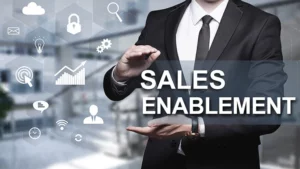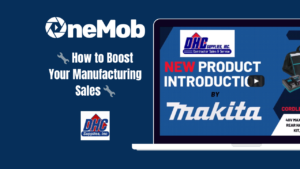In sales and marketing, demos play a pivotal role because they showcase the true potential of the product or service. The sales demo environment is, therefore, much more than just a marketing tool; it’s an essential way to present the product value in a practical setting. The ultimate goal of a sales demo environment is to allow potential customers to experience the value of the product in a real-world scenario.
Consider the process of a car sale: you wouldn’t buy a car without taking it for a test drive. The sales demo environment, in this respect, serves as a “test drive” for the product. It allows the prospect to interact with the product, examine its features, and understand how it can address their specific needs.
The Impact on Purchasing Decisions
The sales demo environment can significantly influence purchasing decisions. It lets potential buyers get a firsthand feel of how the solution works, and understand its potential impact on their job or life. Studies show that prospects are far more likely to make a purchase after a hands-on demonstration compared to a simple explanation or video demonstration.
Think about it this way: A well-prepared sales demo environment doesn’t just demonstrate what the product does, but also its potential for solving real problems. This can create a powerful connection with the prospect and lead them towards the decision of investing in the product.
The Evolution of Sales Demo Environments
Although sales demo environments have been around for quite some time, they’ve significantly evolved with advancements in technology. In the beginning, the demonstrations were simple and straightforward, but advancements have allowed for the creation of realistic, immersive experiences.
One of the most impactful changes is the emergence of interactive sales demo environments. With the rise of software products, the sales demo environment has moved from a static display of features to an interactive exploration of benefits. Software services like OneMob now make it possible for SDRs and sellers to create no-code microsites, generating more customer engagement and lead qualification. This is a huge leap from the traditional sales demo environment, as it gives prospects the feeling of using the actual product.
Remember that the ultimate goal of the sales demo environment is to show prospects the true value of the product. Therefore, the more interactive and immersive the demo environment is, the more effectively it can convey this value to the customer.
Components of an Effective Sales Demo Environment
Demonstrating product value is pivotal for Sales Development Representatives and Sellers. It’s key for building credibility, fostering client relationships, and eventually, closing deals. A well-structured and effective sales demo environment plays a significant role in demonstrating product value. Understanding its components is essential to optimize and enhance interaction with prospective clients.
Crucial Elements of a Sales Demo Environment
- Efficient Tools & Platforms: These include Customer Relationship Management (CRM) systems, communication platforms, and no-code microsite creation tools like OneMob that facilitate personalized and engaging presentations.
- Structured Framework: This involves a well-planned and repeatable demonstration process that can be tailored to specific prospects. It helps in delivering a consistent experience.
- Interactive Elements: Interactive demos are more engaging. This can be achieved through surveys, quizzes, live chats, and interactive infographics.
- Video Messaging: Video messaging has a more personal touch, enhancing engagement. OneMob is a powerful tool that allows users to integrate video messages into their sales demo environments.
Achieving Optimal Performance: Tailoring Your Demo Environment
Tailoring your demo environment to your product is important. This includes customising the demo content and how it is presented to match the product’s unique features and benefits. OneMob has the capability to connect to your mailbox, send batches of emails, engage your customers, and personalise your product demo. This results in better lead generation, more calls, meetings, and ultimately – increased revenue.
Role of Technology and Automation in Enhancing Sales Demo Environments
Technology and automation are two indispensable components of an effective modern sales demo environment. They save time, reduce human error, and enable scalability. As an example, OneMob enables immediate creation of no-code microsites, supporting multiple media, and enhancing customer engagement by empowering users to create visually engaging and informative presentations.
Bottom line: An effective sales demo environment is a amalgamation of strategic planning, high-grade technology and personalization. It can significantly impact your prospects’ decision making process and elevate your sales results.
Creating Your Own Successful Sales Demo Environment
In the previous section, we dove deep into the components of an effective sales demo environment, and analyzed how tailoring your demo environment to your product and utilizing modern technology and automation can significantly enhance your sales demo environments. Now, let’s take this knowledge one step further and discuss how you can create your own successful sales demo environment.
Defining your objectives
First and foremost, it’s important to clearly define what you want your demo environment to achieve. Do you want to impress prospects with the uniqueness of your product? Or perhaps demonstrate how users can solve their problems using your software? Being clear about your objectives is crucial in structuring a winning sales demo environment. The objective of your demo environment should always align with your overall sales strategy, as it helps in effectively crafting a selling pitch and the narrative around it. In doing so, it enables Sales Development Representatives to qualify leads more efficiently and get prospects excited about your product.
Planning and structuring your sales demo environment
Once you’ve defined your objectives, the next step is planning and structuring your sales demo environment. A well-planned sales demo environment should mirror the real-world usage of your product. It should be realistic, relevant, and engaging to your prospects, encapsulating all the crucial elements we’ve outlined before. For instance, utilizing a platform like OneMob can be extremely helpful in achieving this. OneMob allows you to create no-code microsites that can be easily personalized and optimized for customer engagement and lead generation, driving a meaningful connection with your prospects.
Maintaining and updating your demo environment: An ongoing process
Finally, remember that maintaining and updating your demo environment is an ongoing process. New features of your product, changes in market trends, or shifts in your buyer’s needs may call for updates to your demo environment. It’s important to keep your demo environment up-to-date and aligned with the current state of your product and market. With OneMob, this can be done effortlessly as you can quickly update your microsites with new media and messaging.
Creating a successful sales demo environment requires careful planning, strategic decision making, and regular maintenance. By concentrating on your objectives, structuring your environment effectively, and committing to ongoing updates, you can greatly enhance your sales demos and ultimately increase your sales performance. Remember, every great sales demo is leveraged by a great demo environment.







